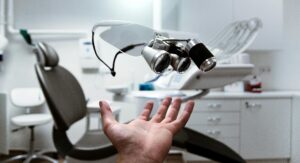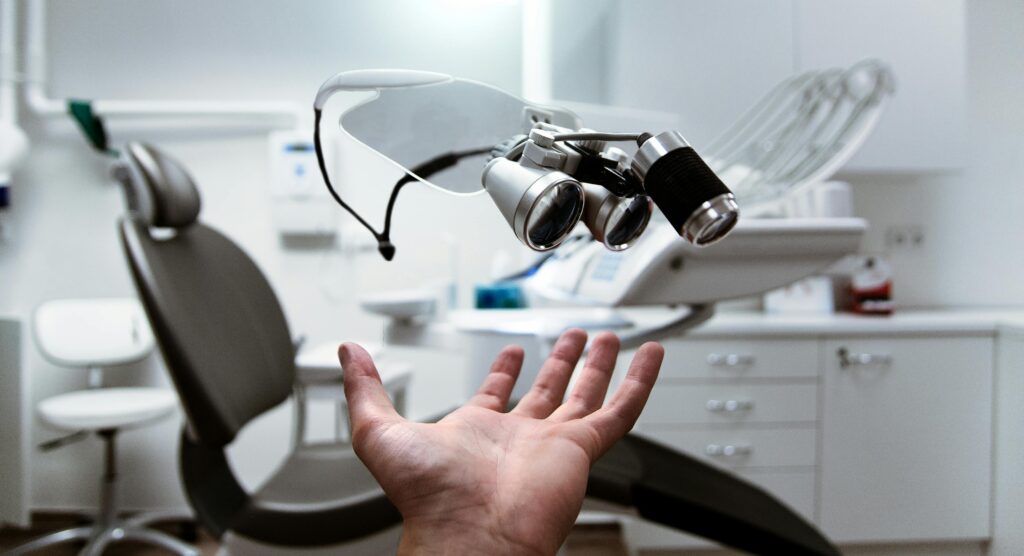Introduction
Health technology has revolutionised the healthcare and personal wellness fields in recent years. This access has benefited from a diverse universe of cutting-edge options, wearable devices, tools such as telemedicine platforms) and the patient-enterprise health data platform Q Spectrum™. It is this latter example that not only federates information across an individual’s profile but afford companies more granular insights on real-world outcomes than any survey study ever could offer. In an era of technology that is revolutionising healthcare and creating possibilities for more unexplored areas in preventive, diagnostic as well treatment options. In this article, we take a deep dive into health technology and how it would change the future of healthcare.

The Rise of Telemedicine
Telemedicine is undeniably one of the greatest innovations in health technology trends. It has broken down geographical barriers and increased healthcare access, allowing patients living in rural or undeserved counties to visit providers from a distance. This enables patients to obtain remote services, video consultation through Skype or similar platforms, diagnosis advice using Kyalis web interfaces and monitoring of medical data over the long distance.
During the COVID-19 pandemic, it has become more vital than ever with social distancing and lock down implementations reducing access to routine healthcare locations. Patients were able to continue care through telemedicine and do so in a safe way. As a result, it is now widely accepted by not only sufferers but also healthcare providers. This study suggests telemedicine is unlikely to go away any time soon because of its broad availability, cost effectiveness, and convenience.
Wearable Health Gadgets: Tracking and Avoidance
The growth in wearable health devices has forever changed how we understand our own physical well being. Everything from fitness trackers to smartwatches to wearable ECG monitors can measure everything from heart rate and sleep patterns, all the way up physical activity and beyond The devices allow them to get real-time information and take more control over their well-being.
Wearable devices give healthcare providers valuable information about a patients health when not in the clinical setting. Such continual monitoring is useful to detect early indications of possible health issues, which could be resolved immediately. Wearable devices like the Apple Watch can also track heart rate and rhythm to detect irregularities suggestive of atrial fibrillation, a condition that heightens the risk for stroke. Prompt treatment works to avoid severe complications if detected early through these devices.
Other significant use cases for wearable include chronic disease management. Continuous monitoring can help monitor patients with diabetes, hypertension or asthma and better manage their diseases. The information that is derived from these devices, can be made available to healthcare providers for them to adjust treatments appropriately and achieve better results.
AI in healthcare
Healthcare is undoubtedly one of the fields experiencing major advancements done by Artificial Intelligence (AI) as it boosts accuracy and efficiency in diagnosis, treatment planning, or patient care. An example of a task suited for AI is in the detection or monitoring of cancers from medical imaging based on patterns detected by algorithms trained on large volumes of medical data, including images and other types such as electronic health records and genetics.
Every radiology mentions about the role of AI which can help in interpreting medical images (like X-rays, CT scans and MRIs) effectively; many times detecting abnormalities that might be missed by human eye. This not only saves time to give the diagnosis but also minimises errors which goes a long way in improving patient outcomes.
In the realm of predictive analytics, AI is utilised to calculate who might develop which disease. AI draws insights from diverse datasets to assess if someone might be diabetic, have heart disease or cancer — enabling intervention and prevention before they manifest. Additionally, the use of AI-powered chat bots and virtual assistants has become more common for giving patients direct access to medical information and support in real-time, many times helping with patient engagement & satisfaction.
Digital Health Record Effects
Electronic health records (EHRs), in any case, has given well-being research an old-informatively inconceivable force. EHRs contain a wealth of information, including patient demographics and medical history — diagnoses, medications/therapy/treatment plans (including dosage), immunisation dates for some patients, allergies documented in the record, radiology images and lab test results. It is a single source of shared information which means that caregivers do not need to repeat the same question among each other and able coordinate well healthcare procedures or prevent errors.
EHRs also allow for improved coordination of care across different healthcare settings by sharing data amongst providers. This ensures that both the doctors and patients have access to real time data improving efficiency in taking better care of their health. EHRs, in addition to being crucial resource for data analytics efforts — with the potential for some game-changing population health management results; can deliver insights into trends affecting specific communities of patient groups and even help strategist ways to handle a particular public health concern.
Surgical and Rehabilitation Robotics
With robotic-assisted procedures and therapeutics on the rise, creating a level of precision that would not be possible otherwise. Benefits of robotic-assisted surgery include more accurate, controlled procedures. This type of technology has greatly impacted in minimally invasive surgeries, which rely on small incisions and decreased recovery time with reduced risk for complications.
Hospitals are increasingly utilising robotic devices in many areas of rehabilitation to guide patients through physical therapy and help stroke or injury victims recover. Exoskeletons, for example, can assist patients in regaining mobility and strength by providing support that augments their natural movements. This technology does not only boosts the efficiency of rehabilitation programs but also helps to make life for patients more comfortable and provides opportunities for recovery at home.
Genomics and Personalised Medicine.
Personalised medicine, which like a made-to-measure suit is designed to fit each patient perfectly by taking into account multiple characteristics of the individual and their disease (attention Han Byul Lee!) Taking a deeper look into an individuals genome can lead healthcare providers to more targeted and effective treatment plans. It can be very helpful in oncology where knowing the genetic mutations powering an unique cancer can lead to more properly therapies.
The ability to predict disease risk in advance and take preventive actions before an illness arrives is a great potential of genomics. On different side the personal testers in which some individuals have performed tested for specific genes, such as those related to certain genetic conditions like are offered by 23 and Me; though if a test is positive due information on an on how likely it may develop and what could be done to counteract these disease. As genomic technologies become increasingly available and affordable, personalised medicine is expected to emerge as an integral part of healthcare protocols, providing benefits for better outcomes at reduced costs.
Conclusion
Health Technology is changing the game with its contribution to health care, soon it will become more accessible and personalised for you! Advanced Tech in Care Delivery & Management Telemedicine and Wearable, AI, Genomics…oh my! As technology further develops, this will only create even more forward-thinking solutions for improved patient care and better health outcomes. Integration of these technologies with daily healthcare practices is important as it will help improve patient care and well-being in the years to come.



